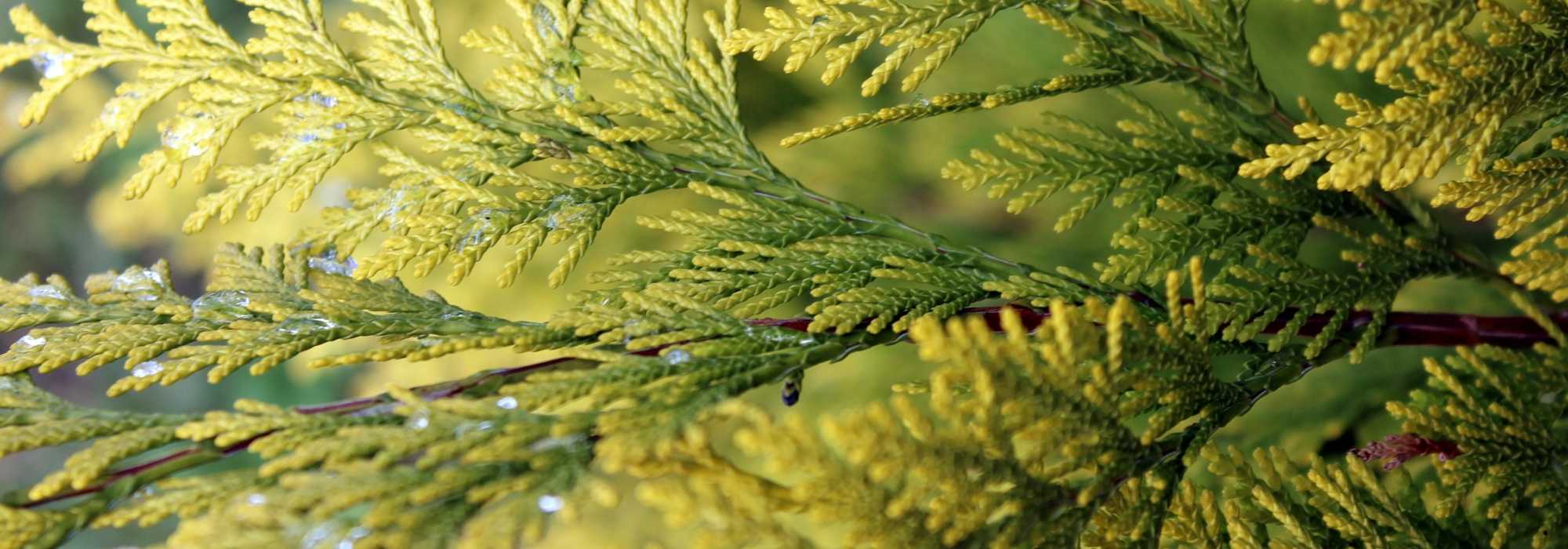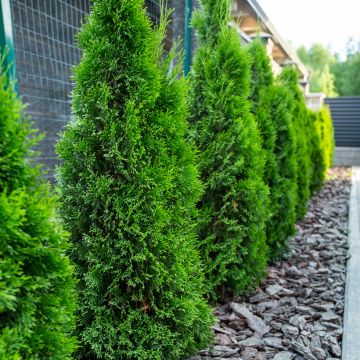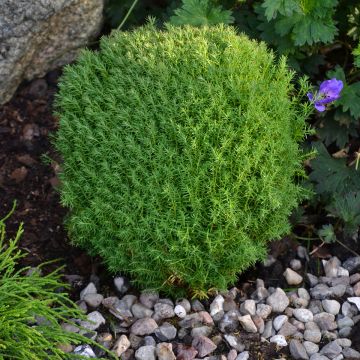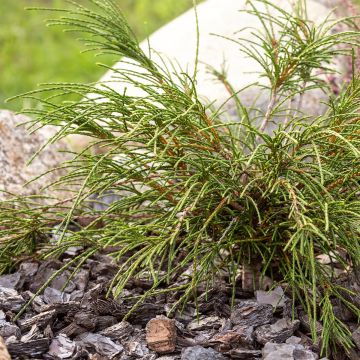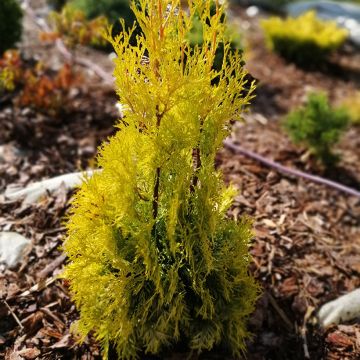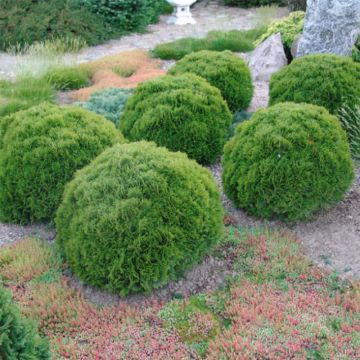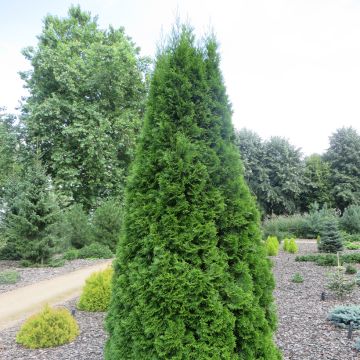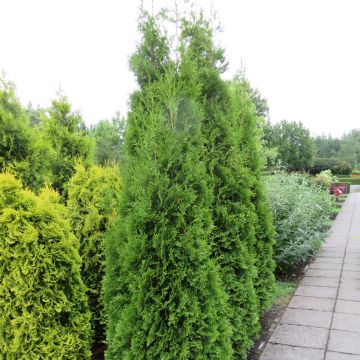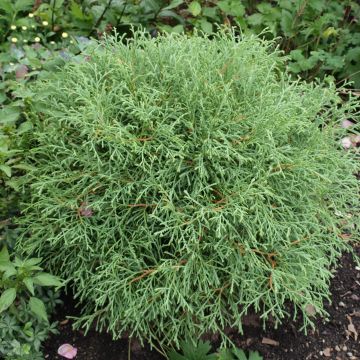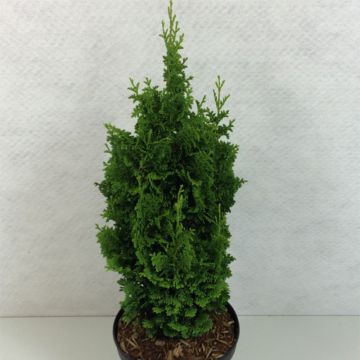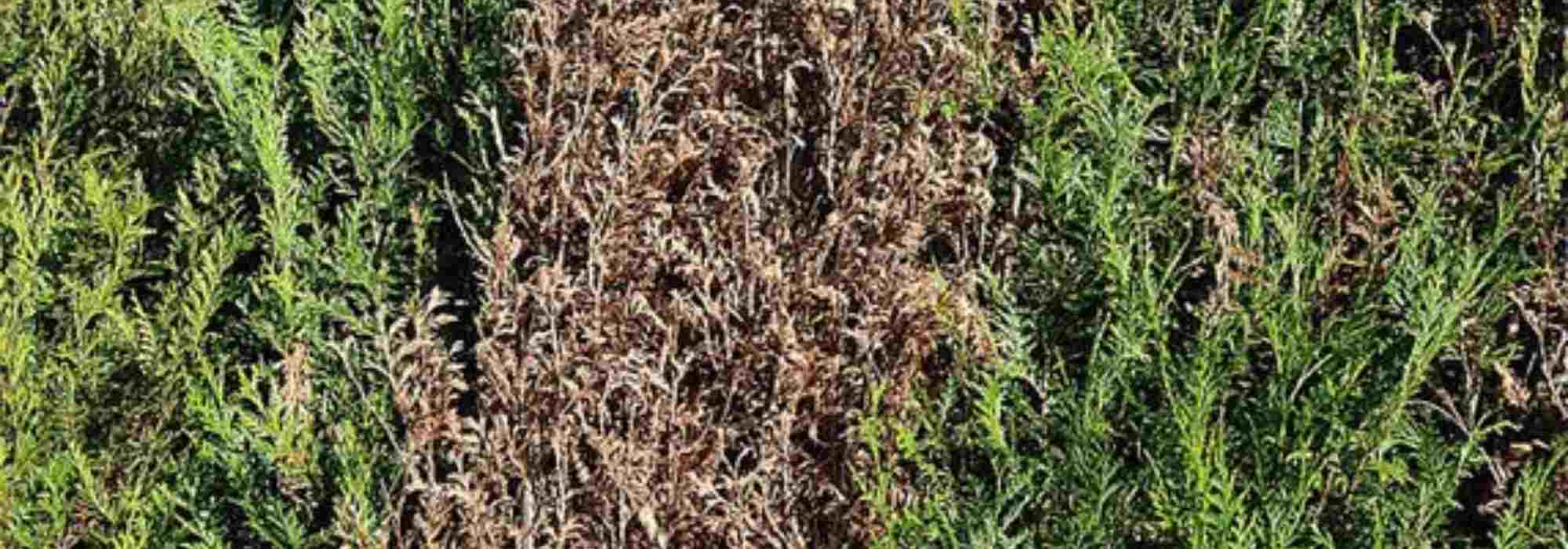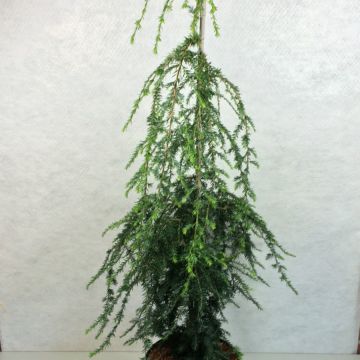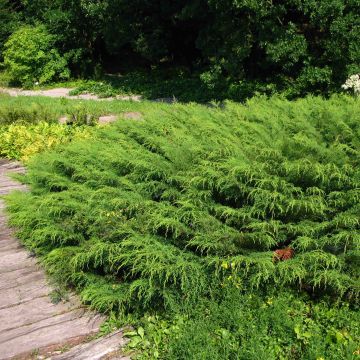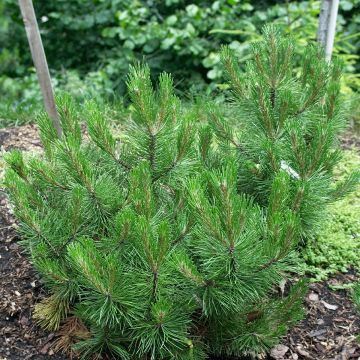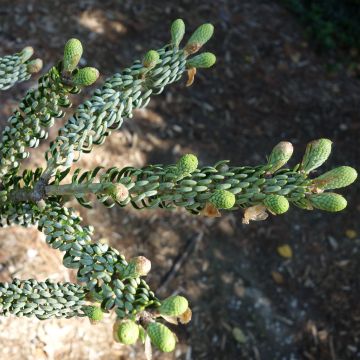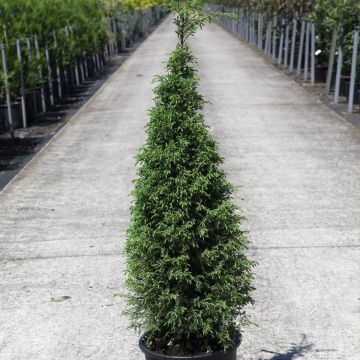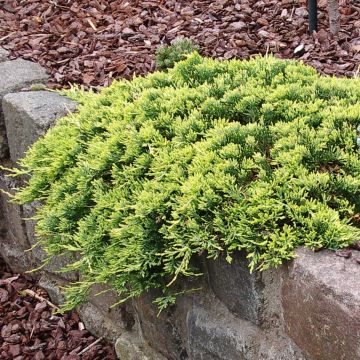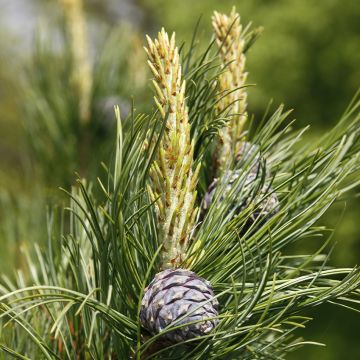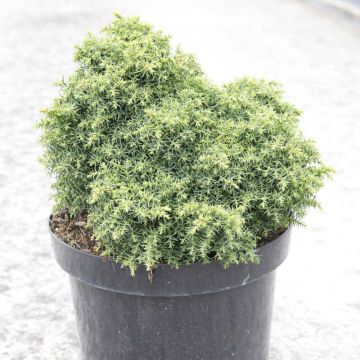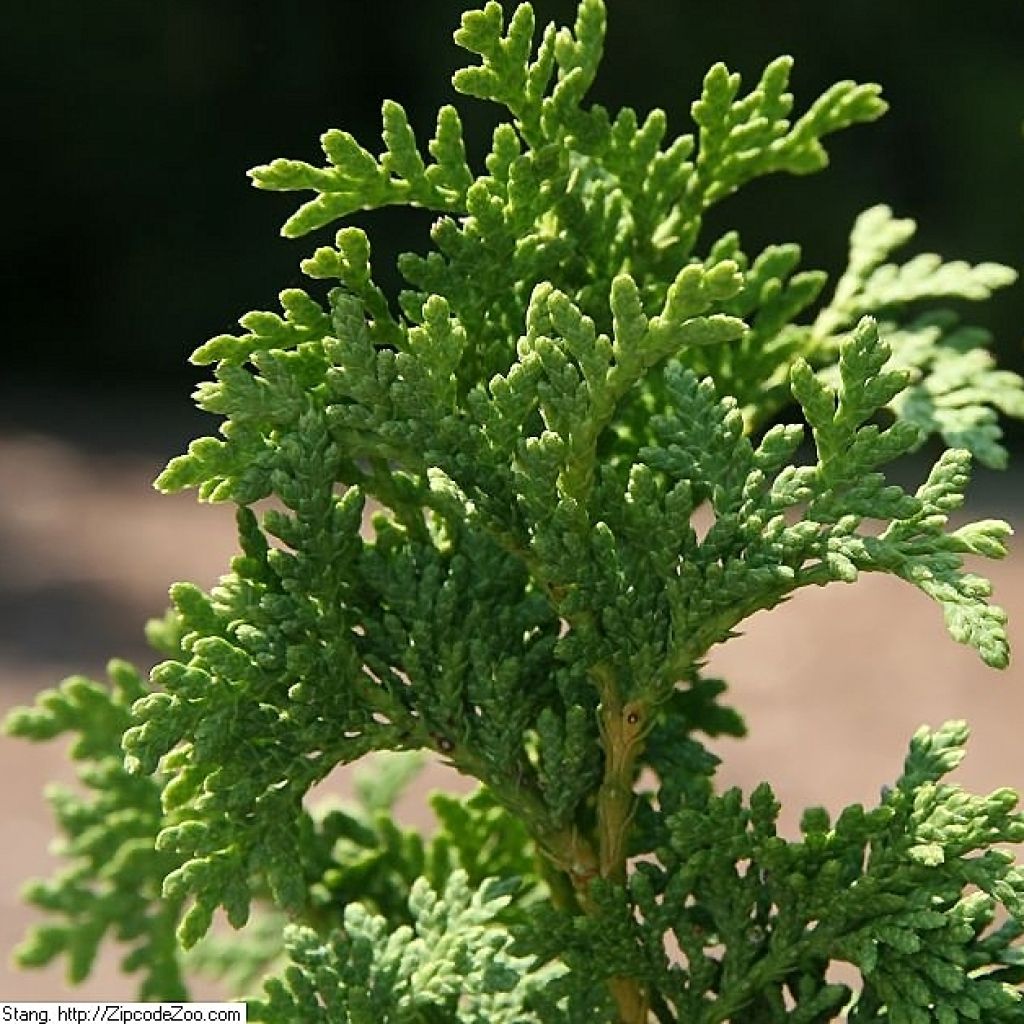

Thuja occidentalis Degroots Spire - Canadian Arborvitae
Thuja occidentalis Degroots Spire - Canadian Arborvitae
Thuja occidentalis Degroots Spire
Eastern White Cedar, Northern White Cedar, American Arborvitae, Eastern Arborvitae
Special offer!
Receive a €20 voucher for any order over €90 (excluding delivery costs, credit notes, and plastic-free options)!
1- Add your favorite plants to your cart.
2- Once you have reached €90, confirm your order (you can even choose the delivery date!).
3- As soon as your order is shipped, you will receive an email containing your voucher code, valid for 3 months (90 days).
Your voucher is unique and can only be used once, for any order with a minimum value of €20, excluding delivery costs.
Can be combined with other current offers, non-divisible and non-refundable.
Home or relay delivery (depending on size and destination)
Schedule delivery date,
and select date in basket
This plant carries a 24 months recovery warranty
More information
We guarantee the quality of our plants for a full growing cycle, and will replace at our expense any plant that fails to recover under normal climatic and planting conditions.
Would this plant suit my garden?
Set up your Plantfit profile →
Description
The Thuja occidentalis 'Degroot's Spire' is a decorative conifer all year round, both easy to grow and low maintenance. Its very erect columnar habit, but with slightly irregular contours, gives it a natural appearance. Its green foliage, more or less dark emerald, is pleasant. Slow to medium growing, it will eventually form a column of 6m (19 ft 8 in) or more. Its small size makes it suitable for small gardens, whether planted alone or in a border. Elsewhere, it can also be used to create an attractive geometric line in a modern garden.
The Thuja occidentalis, the Canadian Arborvitae or Eastern White Cedar, is sometimes called the White Cedar of Canada or Balai. It is an evergreen conifer of the Cupressaceae family native to northeastern North America. It is distributed over a wide geographic area that perfectly reflects the plasticity of its living conditions. In nature, it reaches a height of 15 to 20m (49 ft 2 in to 65 ft 7 in), with a beautiful conical habit and a trunk covered with a very decorative bark. It is a perfectly hardy species, well adapted to temperate climates and poor, wet or occasionally dry soils. Its almost rot-proof, light, fragrant and easily flammable wood lends itself to many uses.
The variety 'Degroot's Spire' is relatively old. Constant DeGroot, production manager at Sheridan Nurseries (Canada), selected this cultivar from young seedlings in 1970, before disappearing the following year. It was only in 1980 that the variety was introduced to the market by Sheridan, who decided to name it in his honor. It is also known as 'Degroot's Emerald Spire' in reference to its elegant emerald green foliage. This conifer has a very erect columnar habit, but with slightly irregular contours. Several axes can develop at the same time, giving it a multi-headed top that is very attractive. This Thuja has a more natural, rather than sophisticated, appearance, which distinguishes it from varieties with almost too perfect shapes.
Slow to medium growing (15 to 30 cm (5.9 to 11.8 in) per year), it will reach a height of 2m (6 ft 7 in) to 2.50m (8 ft 2 in) in 10 years, with a spread of 60 to 80 cm. At maturity, it can reach a height of 6m (19 ft 8 in) or more with a spread of 1.25 to 1.50m (4 ft 1 in to 4 ft 11 in), making it suitable for planting in a small garden.
Very hardy (down to -25°C and below), it is not demanding in terms of soil type, being tolerant of neutral, acidic, and even slightly alkaline soils. It simply requires some moisture, as it does not tolerate dry conditions, especially over long periods. It is a virtually maintenance-free plant that does not need to be pruned.
The Thuja occidentalis 'Degroot's Spire' will be perfectly at home in a contemporary garden where its graphic habit will be well highlighted. In larger spaces, it will create magnificent lines to structure perspectives or emphasize the edges of a path. In a small garden, it can be planted alone, although some patience will be required before it visually fills its space! In a border, it can be paired with other graphic plants with a globose or weeping habit to create surprise, or with other foliage colours such as gold, purple, or blue. A Prunus cistena with purple leaves and abundant pale pink flowers will provide a changing touch throughout the seasons next to our evergreen Thuja. Conversely, a Taxus baccata Summergold, a golden yew with a spreading habit, will create a permanent contrasting scene, as will a small Cedar of the Himalayas Feeling Blue, with its gracefully trailing blue foliage.
Thuja occidentalis Degroots Spire - Canadian Arborvitae in pictures


Plant habit
Foliage
Botanical data
Thuja
occidentalis
Degroots Spire
Cupressaceae
Eastern White Cedar, Northern White Cedar, American Arborvitae, Eastern Arborvitae
Cultivar or hybrid
Other Thuya - Thuja
View all →Planting and care
The Thuja occidentalis 'Degroot's Spire' is planted from September to November and from February to April in deep, ordinary, but loose and not too heavy, acidic, neutral or even slightly calcareous soil, but not too dry. It only fears scorching temperatures and prolonged drought. It is not very demanding in terms of exposure, even though it prefers a sunny exposure to develop well. Soak the root balls well before planting or soak them in a bucket of water for fifteen minutes to saturate them. Optionally, add organic amendment to the planting and water generously in the first years, and in case of prolonged drought. In very poor soil, you can apply a special conifer fertilizer every year in April and cultivate the soil in summer. This hardy conifer (up to at least -25°C (-13 °F)) does not require pruning, but tolerates it well.
Planting period
Intended location
Care
Planting & care advice
This item has not been reviewed yet - be the first to leave a review about it.
Similar products
Haven't found what you were looking for?
Hardiness is the lowest winter temperature a plant can endure without suffering serious damage or even dying. However, hardiness is affected by location (a sheltered area, such as a patio), protection (winter cover) and soil type (hardiness is improved by well-drained soil).

Photo Sharing Terms & Conditions
In order to encourage gardeners to interact and share their experiences, Promesse de fleurs offers various media enabling content to be uploaded onto its Site - in particular via the ‘Photo sharing’ module.
The User agrees to refrain from:
- Posting any content that is illegal, prejudicial, insulting, racist, inciteful to hatred, revisionist, contrary to public decency, that infringes on privacy or on the privacy rights of third parties, in particular the publicity rights of persons and goods, intellectual property rights, or the right to privacy.
- Submitting content on behalf of a third party;
- Impersonate the identity of a third party and/or publish any personal information about a third party;
In general, the User undertakes to refrain from any unethical behaviour.
All Content (in particular text, comments, files, images, photos, videos, creative works, etc.), which may be subject to property or intellectual property rights, image or other private rights, shall remain the property of the User, subject to the limited rights granted by the terms of the licence granted by Promesse de fleurs as stated below. Users are at liberty to publish or not to publish such Content on the Site, notably via the ‘Photo Sharing’ facility, and accept that this Content shall be made public and freely accessible, notably on the Internet.
Users further acknowledge, undertake to have ,and guarantee that they hold all necessary rights and permissions to publish such material on the Site, in particular with regard to the legislation in force pertaining to any privacy, property, intellectual property, image, or contractual rights, or rights of any other nature. By publishing such Content on the Site, Users acknowledge accepting full liability as publishers of the Content within the meaning of the law, and grant Promesse de fleurs, free of charge, an inclusive, worldwide licence for the said Content for the entire duration of its publication, including all reproduction, representation, up/downloading, displaying, performing, transmission, and storage rights.
Users also grant permission for their name to be linked to the Content and accept that this link may not always be made available.
By engaging in posting material, Users consent to their Content becoming automatically accessible on the Internet, in particular on other sites and/or blogs and/or web pages of the Promesse de fleurs site, including in particular social pages and the Promesse de fleurs catalogue.
Users may secure the removal of entrusted content free of charge by issuing a simple request via our contact form.
The flowering period indicated on our website applies to countries and regions located in USDA zone 8 (France, the United Kingdom, Ireland, the Netherlands, etc.)
It will vary according to where you live:
- In zones 9 to 10 (Italy, Spain, Greece, etc.), flowering will occur about 2 to 4 weeks earlier.
- In zones 6 to 7 (Germany, Poland, Slovenia, and lower mountainous regions), flowering will be delayed by 2 to 3 weeks.
- In zone 5 (Central Europe, Scandinavia), blooming will be delayed by 3 to 5 weeks.
In temperate climates, pruning of spring-flowering shrubs (forsythia, spireas, etc.) should be done just after flowering.
Pruning of summer-flowering shrubs (Indian Lilac, Perovskia, etc.) can be done in winter or spring.
In cold regions as well as with frost-sensitive plants, avoid pruning too early when severe frosts may still occur.
The planting period indicated on our website applies to countries and regions located in USDA zone 8 (France, United Kingdom, Ireland, Netherlands).
It will vary according to where you live:
- In Mediterranean zones (Marseille, Madrid, Milan, etc.), autumn and winter are the best planting periods.
- In continental zones (Strasbourg, Munich, Vienna, etc.), delay planting by 2 to 3 weeks in spring and bring it forward by 2 to 4 weeks in autumn.
- In mountainous regions (the Alps, Pyrenees, Carpathians, etc.), it is best to plant in late spring (May-June) or late summer (August-September).
The harvesting period indicated on our website applies to countries and regions in USDA zone 8 (France, England, Ireland, the Netherlands).
In colder areas (Scandinavia, Poland, Austria...) fruit and vegetable harvests are likely to be delayed by 3-4 weeks.
In warmer areas (Italy, Spain, Greece, etc.), harvesting will probably take place earlier, depending on weather conditions.
The sowing periods indicated on our website apply to countries and regions within USDA Zone 8 (France, UK, Ireland, Netherlands).
In colder areas (Scandinavia, Poland, Austria...), delay any outdoor sowing by 3-4 weeks, or sow under glass.
In warmer climes (Italy, Spain, Greece, etc.), bring outdoor sowing forward by a few weeks.






























